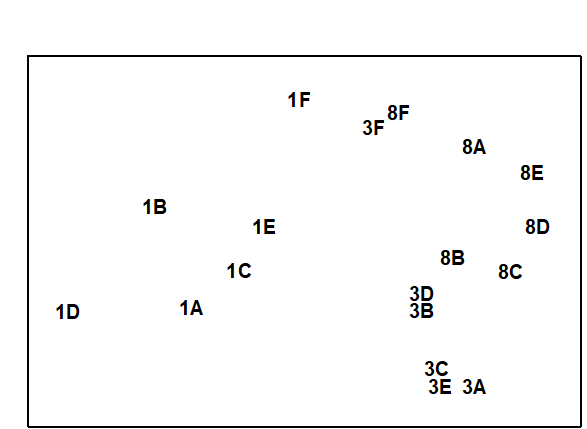12.3 Field experiments
Field manipulative experiments include, for example, caging experiments to exclude or include predators, controlled pollution of experimental plots, and big-bag experiments with plankton. Their use was historically (unsurprisingly) predominantly for univariate population rather than community studies, although some early examples of multivariate analysis of manipulative field experiments include Anderson & Underwood (1997) , Morrisey, Underwood & Howitt (1996) , Gee & Somerfield (1997) and Austen & Thrush (2001) . The following example is one in which univariate, graphical and multivariate statistical analyses have been applied to meiobenthic communities.
Azoic sediment recolonisation experiment with predator exclusion {Z}
Olafsson & Moore (1992) studied meiofaunal colonisation of azoic sediment in a variety of cages designed to exclude epibenthic macrofauna to varying degrees: A – 1 mm mesh cages designed to exclude all macrofauna; B –1 mm control cages with two ends left open; C – 10 mm mesh cages to exclude only larger macro-fauna; D – 10 mm control cages with two ends left open; E – open unmeshed cages; F – uncaged background controls. Three replicates of each treatment were sampled after 1 month, 3 months and 8 months and analysed for nematode and harpacticoid copepod species composition.
Univariate indices. The presence of cages had a more pronounced impact on copepod diversity than nematode diversity. For example, after 8 months, $H ^ \prime$ and $J ^ \prime$ (but not $S$) for copepods had significantly higher values inside the exclusion cages than in the control cages with the ends left open, but for the nematodes, differences in $H ^ \prime$ were of borderline significance (p = 5.3%).
Graphical/distributional plots. No significant treatment effect for either nematodes or copepods could be detected between k-dominance curves for all sampling dates, using the ANOSIM test for curves, referred towards the end of Chapter 8 (page 8.5).
Multivariate analysis. For the harpacticoid copepods there was a clear successional pattern of change in community composition over time (Fig. 12.4), but no such pattern was obvious for the nematodes. Fig. 12.4 uses data from Table 2 in Olafsson and Moore’s paper, which are for the 15 most abundant harpacticoid species in all treatments and for the mean abundances of all replicates within a treatment on each sampling date. On the basis of these data, there is no significant treatment effect using the 2-way crossed ANOSIM test with no replication¶ (see page 6.8), but the fuller replicated data may have been more revealing.
Fig. 12.4. Azoic sediment recolonisation experiment {Z}. MDS configuration for harpacticoid copepods (4th root transformed abundances) after 1, 3 and 8 months, with 6 different treatments (A–F), see text (stress = 0.07).
¶ Note, however, that this test (or the equivalent PERMANOVA test which exploits the interaction term as its residual) will be uninformative in the presence of large treatment $\times$ time interactions, which is a likely possibility here.

